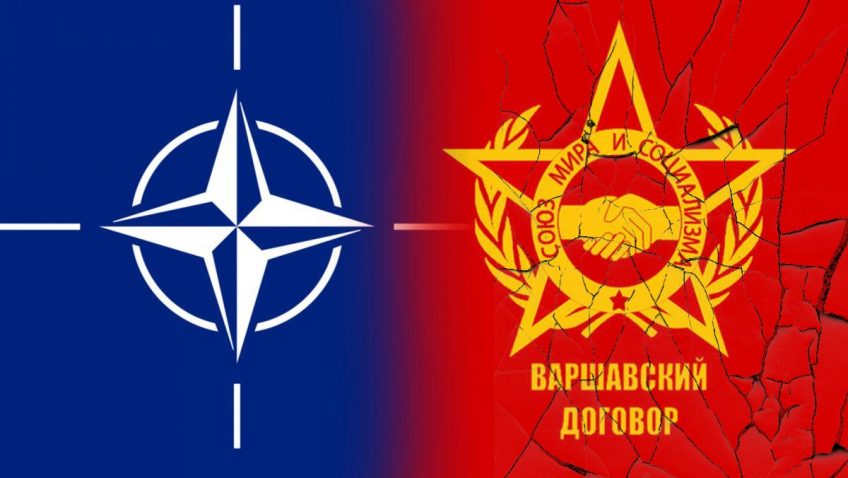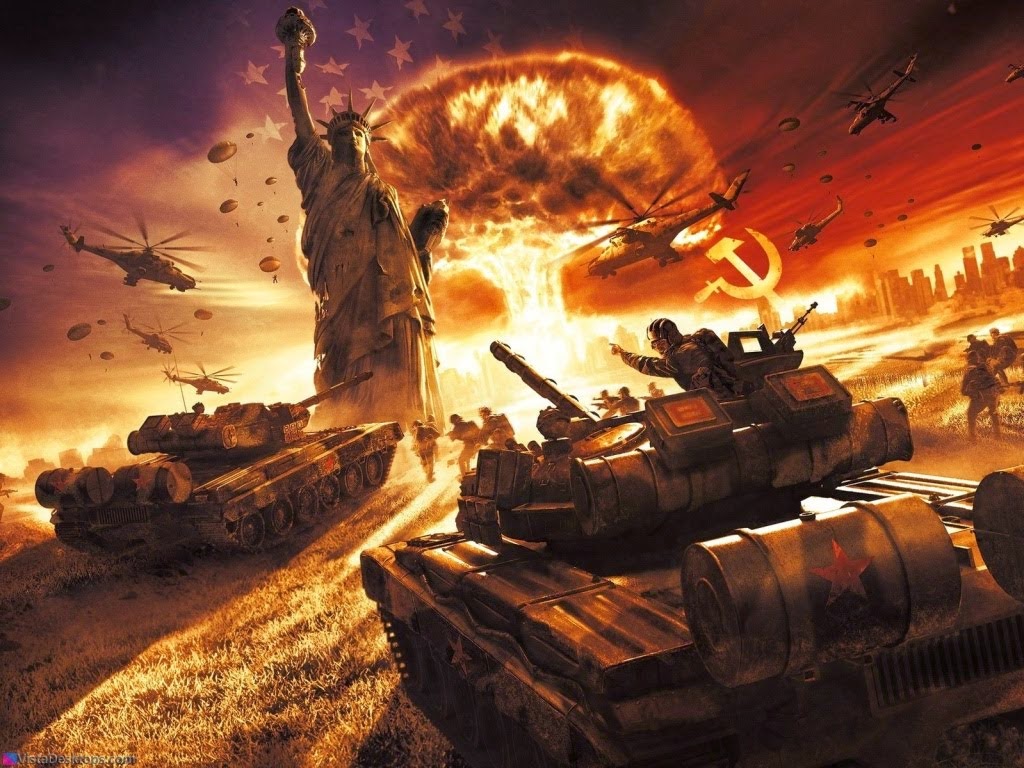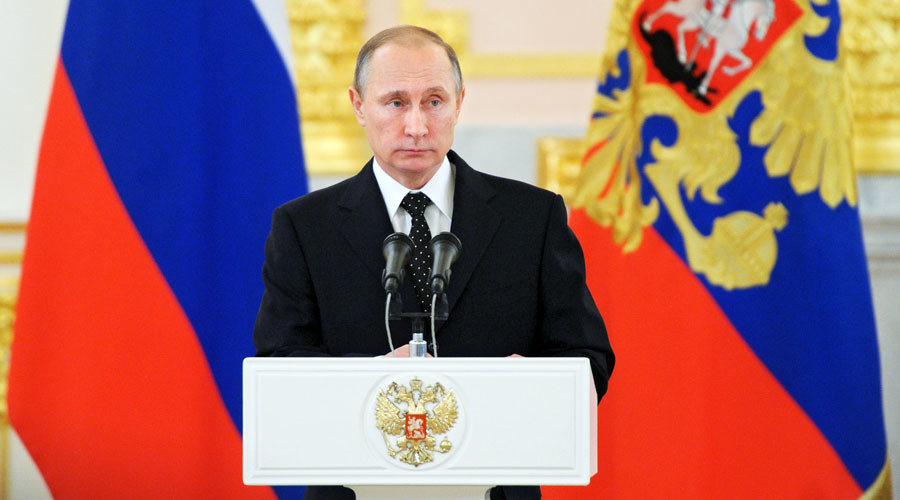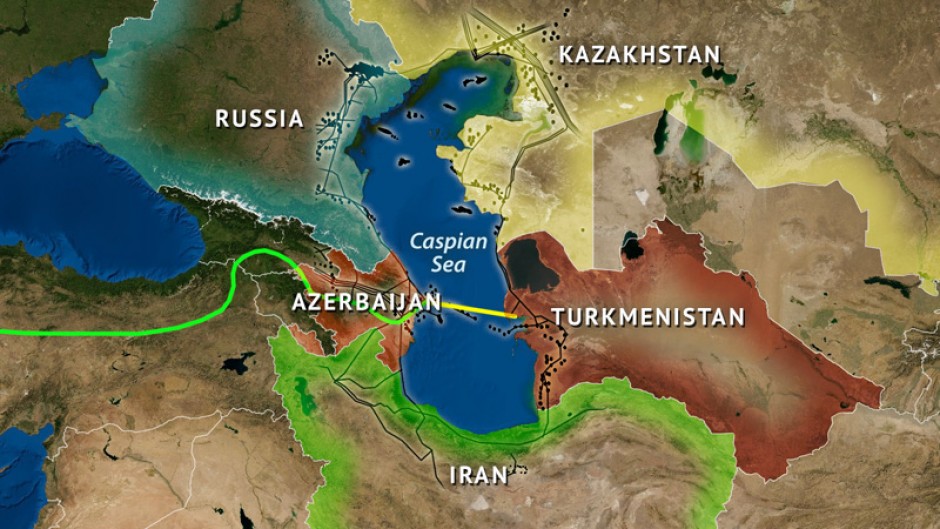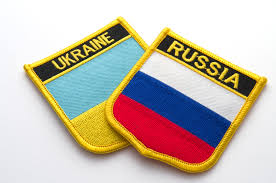In the late 1980s and early 90s big shifts took place in the sphere of international relations. The Soviet authorities showed the willingness to reduce the military potential on the basis of the “reasonable sufficiency” and refused “the Brezhnev doctrine” which justified direct interventions (including military ones) in the internal affairs of the countries under the Soviet influence. Parallelly in the Reagan administration which came to power on the early 1980s having elaborated the “strategy of direct confrontation” in global and regional dimensions against the USSR aimed at achieving a complete advantage over the latter occurred a positive change in the approach to the Kremlin. At the same time the deepening economic crisis in the Eastern and Central Europe, the ethnic discontent and stagnation, the decline of “the Brezhnev doctrine” and the holding of the multiparty elections served as a ground to the West for carrying out the “peaceful evolution” of political regimes and the democratic revolution of these countries. The West welcomed the processes taking place in the Central and Eastern European countries, and in 1989 George Bush S. stated in Brussels that the US withdrew from “containment” policy which was the basis of its policy during the Cold War. Especially after the Socialist block weakening and expected collapse, NATO ’s summit in Brussels (on May 28-30, 1989) got a huge importance.
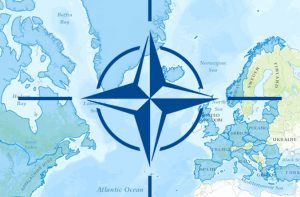
In addition to the declaration marking the 40th anniversary of the Alliance was adopted the Comprehensive Concept Of Arms Control And Disarmament. J. Bush Sr.’s initiative was approved related to the acceleration of negotiations within the CSCE in Vienna, which envisaged the reduction of soldiers and armed forces beyond the borders of the United States and the Soviet Union. As a result, the Soviet Union essentially reduced its military presence beyond its borders and withdrew its armed forces from the GDR* (the German Democratic Republic). Under these circumstances, the need to keep large military forces and equipment outside the borders decreased. As regarded the Central and Eastern European countries, one of the key ideas of the 1989 revolution, besides getting rid of the Soviet influence was the unification and integration with Western Europe. Initially, for solving these issues they “turned their eyes” towards the CSCE and the European Communities. The above-mentioned countries were already members of the CSCE and the perception of the latter among these countries had moral significance as well because the Helsinki Final act played a certain role in the protection of human rights and the inspiration of communism opponents. But in any case, one thing was obvious: it was impossible to expect the overcoming of the security problems and the Cold War watershed barrier in the East of Europe only from organizations having moral influence but small military potential. If the CSCE was weak in this respect, the European communities were rather sluggish and soon the hope among the Central European and Eastern European countries to join them faded away. The point is that 1990s were the period of transformation of the European integration unions too. In the frameworks of the European communities, negotiations had been taking places parallelly aimed at deepening the integration process concerning new European agreements which would give the former socialist countries limited access to their markets and political consultation mechanisms, bypassing their immediate membership in the future. There was a serious disagreement within the European Communities too: whether to focus on the integration deepening within Western Europe or to expand to the East and include new European countries. The first position was supported by France: in accordance with president F. Mitterrand* the future integration of the above-mentioned countries into the prospective EU structures could last for decades. Obviously, Western Europe with its countries and the integration unions would not be able to ensure the security of the former socialist countries. As to NATO, the Central and Eastern European countries seek to join NATO following these reasons:
- The cooperation was a guarantee to prevent the reestablishment of the USSR and after 1991 the Russian Federation influence over them;
- It was a kind of “checks and balances” for the European countries in the case of united Germany (rising out of the historical experience of the past);
- It was important to the regional countries to have a security power in the context of a complex geopolitical situation and this in its turn was in line with the US interests aimed at providing on-site pro-western forces.
On 25 February 1991, the Warsaw Pact was declared disbanded and the USSR remained without allies. This was a cause for concern, especially when the West didn’t hurry to dissolve NATO. On the contrary, the United States and its allies persistently insisted on keeping NATO as the sole guarantor for world security and stability. At the same time, the question concerning the existence of NATO and the American military forces was continuously becoming controversial. Despite this dispute the NATO leaders strongly supported the view of maintaining the alliance, stating their approach as follows:
- It provided protection from risks: although there was no threat of the Soviet attack any more, but also there wasn’t established a long-term political order in Europe;
- The activity of the organization legalized the US engagement in the European security on the basis of collective defence obligations;
- The CSCE (since 1994 OSCE) mediation and the resolution of conflicts felt the need for the NATO military structures assistance for peaceful resolution of the
After the end of the Cold War, it became clear that the “good intentions” originally declared by NATO were just a kind of outer cover. Even after the collapse of the USSR, NATO kept on assuming the RF which was in a deep crisis in all dimensions as an adversary presenting the danger coming from the latter in the light of complex political and economic situations existing in Russia.
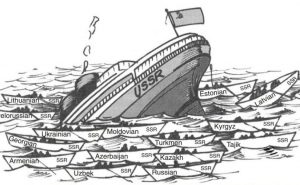
It was unprofitable to the West the dissolution of NATO after the elimination of the Warsaw Pact organization. The proponents of the block maintaining presented all the possible arguments for reconsideration of its existence in the unipolar world order context and under the terms of globalization. The maintenance of NATO and the dissolution of the Warsaw pact organization were considered to be a threat to the USSR security and stability as it made the Soviet Union much more vulnerable. Within the period of the collapse of both the Socialist camp and the USSR, the adaptation and the transformation of NATO to the current situation became imperative. During the years of 1990-1991, the process of the NATO policy and strategy adaptation to restructuring began and its main directions were defined in the London Declaration. The main challenges and the problems the Summit faced were as follows:
- The change of (geo-)political and strategic situation in Europe and in the entire world;
- The trends aimed at strengthening defence cooperation that began in the Western European Union from the early 1990s led to the stratification within the Alliance,
- The emergence of the traditional and relatively new security threats and challenges (since the early 1990s) which questioned NATO’s future as a military structure.
The reform of the Alliance and its activities were considered necessary in accordance with the London Declaration, but it did not mention the ways and means of achieving it. Western analysts believed that the world envisaged by this document was possible only in the case of the permanently weak Soviet Union. But there was no unanimous opinion in NATO on via what methods the pressures on the USSR should be done. The declaration included a provision on the establishment of political, military and security cooperation with the countries of the former Warsaw Pact Organization (one of the key steps to organize the cooperation was to establish diplomatic missions in those countries).
NATO Secretary General M. Wörner stated during the London summit that they were considering the USSR and the Eastern European countries as their future partners and possible friends. The same was confirmed at the NATO member states foreign ministers’ Copenhagen meeting (July 6-7, 1991). The consultation of the CSCE member countries’ heads of the states and governments was held in Paris on November 19-21, 1990. On the eve of the consultation the meeting of NATO and Warsaw Pact member 22 states took place and during that meeting, The Charter of Paris for a New Europe was accepted. The Charter enshrines the end of an era of division and confrontation in Europe. These states announced a joint declaration on the readiness to open a new page in the relations and cooperation in Europe. The Charter of Paris reflected the new, democratic and united vision of Europe and steps were meant to be taken to legalize the CSCE as a forum for dialogue between the two parts of Europe. The Charter was based on the 10 principles of the Helsinki Final Act. One of the realities was that the elimination of global conflict gave the opportunity to Europe to establish its development policy on the benefits of economic and values and views system.
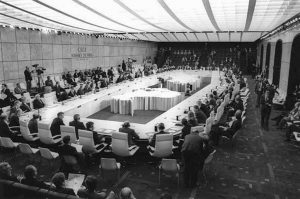
The document stated that the Central and Eastern European countries considered the viability of NATO as an important element of the European security system. It was noted that NATO is interested in European unity, but to achieve this, and solve the problems faced by Europe the only necessary thing was close cooperation with North America. It was noted that the primary task was to develop a new strategic concept for the alliance: it was obvious that in the case of the emerging new world order, when there was no external threat of attack in the east, Europe needed more troops to counteract security threats and to resolve the current crises (including terrorism and the mass destruction weapons’ proliferation).
There were two processes taking place in the second half of 1991 that became important in defining the key directions of NATO’s post-Cold War activities and strategy as well as requiring NATO full membership for Central and Eastern European countries:
- A war broke out in Bosnia in the summer of 1991: Yugoslavia was considered to be a kind of miniature of the Central and Eastern Europe, where the problems existing in the region and especially nationalism were expressed in the most condensed way. In the above-mentioned region there were similar ethnic conflict phenomena typical to Cold War and to be able to avoid further escalation of the situation the close cooperation with the Alliance and the democratic institutional organizations were highlighted as a security measure.
- The hard-line retrograde powers’ failed attempt of the coup in the USSR in the summer of 1991, which had its further impact on the countries of the Central and Eastern Europe: First, it became obvious that they were not insured from such coup attempts, and second, the collapse of the Soviet Union in 1991 caused an earthquake in the geopolitical dimension and as a result of the external (the Warsaw pact organization) and internal (the USSR) socialist empires ceased to exist. As an outcome, between NATO and the core of the Soviet Union- Russia emerged a number of independent states. The Warsaw Pact Organization liquidation impact (March 31, 1991) on the ongoing political processes in Europe, particularly on the talks in Vienna and on the future of the CFE Treaty (Treaty on Conventional Armed Forces in Europe), signed between NATO and The Warsaw Pact Organization 6 members in Paris on November 19, 1990.
The New Strategic Concept of NATO was adopted in Rome on November 7-8, 1991 (The Concept-91) which was the ensemble of the basic principles for getting adapted to new political realities where the ethnic and territorial conflicts came to the forefront. Now the Alliance’s main tasks were crises management, expanding the dialogue with non-NATO member states and carrying out steps and actions directed to the resolution of security problems on the basis of the reciprocal cooperation.
The document analysis made it clear that its basis was the strategy of “flexible response”. According to the concept, the Eastern European and the Baltic countries were included in the scopes of vital interests and mutual relations with NATO should be formed within the frameworks of bilateral relations and “The Partnership for Peace” program. The principle of cooperation also implied the interaction between the CSCE, the Council of Europe and the Western European Union.
Thus, the Concept-91 included following principal changes within NATO policy:
- The concept was based on a broader perception of security, highlighting the need for collective protection;
- emphasized political, economic, cultural and social elements of the NATO activities including not only military but also “total safety and security” component;
- it corresponded to the reality of transformation from confrontation to cooperation as a guaranteed component of peace.
Emphasizing adherence to the principles of the Charter of the United Nations, the Concept-91 maintained the key political goals of the alliance preventing their division between other security institutions in Europe (EU, OSCE, WEU).
The provisions of the obvious priority were as follows:
- The establishment of the necessary foundations for stability and security in Europe, the establishment of democratic institutions and the peaceful settlement of disputes, the fight against the threat or use of force,
- NATO’s transformation to the transatlantic forum to discuss issues of vital importance.
- The protection of member states against aggression and repression,
- The protection of the strategic balance in Europe.
Indeed, as noted by the Deputy Secretary of State C. Oksman, the London (1990) and Rome (1991) summits nominated to the main character of NATO’s future activities.
- NATO adopted a new military strategy of rebuilding its forces and military structures, taking into account the security threats emerged after the Cold War. It declined to use heavy weapons and reducing nuclear weapons in Europe, refused to utilize the initial deployment forces. Instead, non-nuclear forces expanded their flexibility and mobility, which would enable them to respond to crises and conflicts rapidly;
- NATO established the North Atlantic Cooperation Council, for the consultation with the former Warsaw Pact member states in the area of security, coordination and mutual trust;
- NATO announced that new security threats came from countries that are beyond the Alliance’s Washington contractual responsibility area which was the legal foundation and core of NATO. In this way, the future geographical issues of the organization could be considered solved. Besides, NATO offered to cooperate with the CSCE and act jointly for the preservation of peace. For crises management, it was supposed to realize a strong cooperation with the WEU, EC, UN and the structures of transforming European communities’ (later EU). NATO’s role here was highlighted by the fact that it had armed forces, skills in political and military cooperation dimensions for flexible response to security threats;
- The United States, despite its growing budgetary problems, would continue to maintain its membership.
The strategic concepts adopted in the 1990s unlike those adopted previously didn’t only refer to military and political aspects but also to declaring new conceptual approaches to the new post-Cold War Europe and to the rest of the world. If the Western bloc could not even imagine such a Cold War outcome, then theoretically the NATO leaders since the creation of the Alliance sought to achieve this, initially complementing and enhancing their strategic doctrines, and then using the period between The Warsaw Pact Organization collapse (March 1991) and the Belavezhsk accords (December 1991) to confirm the concept of the new strategy (November 1991). The Concept-91 was directed to the strengthening of institutions and ideology among the members of the former Warsaw pact organization. These countries should not have time to create their own ideology and institutions. The NATO leadership being well aware of this took under the preparation of the above-mentioned countries to change the vector and factually to legalize the process development without losing time.
In 1991, a number of Central and Eastern European countries appealed to NATO for granting them the status of an associated member. In reply to this, NATO with 9 Eastern European countries established the North Atlantic Cooperation Council – a multilateral consultative body in which frameworks the cooperation between the parties should be worked out. After the collapse of the Soviet Union, former Soviet states, as well as Albania, became its members.
NACC paid the main attention to the multilateral dialogue between the former socialist countries and NATO. That dialogue was not a full membership but in reality, it was a huge step to closer cooperation and collaboration.
The end of the Cold War led to a number of qualitative changes including the elimination of the Yalta-Potsdam system, the collapse of the USSR and the transition from the bipolar world order to the unipolar one, the emergence of newly independent states in the continent and the deep fragmentation in the centre of Eurasia. Thanks to M. Gorbachev’s policy and a number of objective and subjective reasons for the collapse of the USSR, the West unexpectedly turned out to be the winner of the Cold War. After the collapse of the USSR and the Socialist bloc and the consumption of the reputation of the Non-Aligned Movement only one power centre remained- the USA, which in its turn for the preservation of its own national interests began to rely on global alliances and coalitions one of which was and now is NATO.
In November 1991, within the frameworks of the Rome summit, NATO revealed the new post-Cold War type of its policy establishing the New strategic concept and forming NACC to connect former socialist bloc countries with NATO. The collapse of the Soviet Union led to a need for further changes. The Concept-91 was adopted for a world where the Soviet Union still existed and one of the aims of NATO operations and activities was the containment of possible risks now expressed with much more moderate formulations. This strategic concept fixed the shift from the strategy of military confrontation to the ensuring of extensive security. This was a strategy of no enemy for there was no longer the existence of the Warsaw pact organization led by the USSR. TheConcept-91 was released to show NATO ’s operations’ transparency, reliability and its readiness for cooperation. Despite the extension of the Alliance was not a priority but such developments could not be excluded in the future.
(the link to the electronic article in Armenian)

